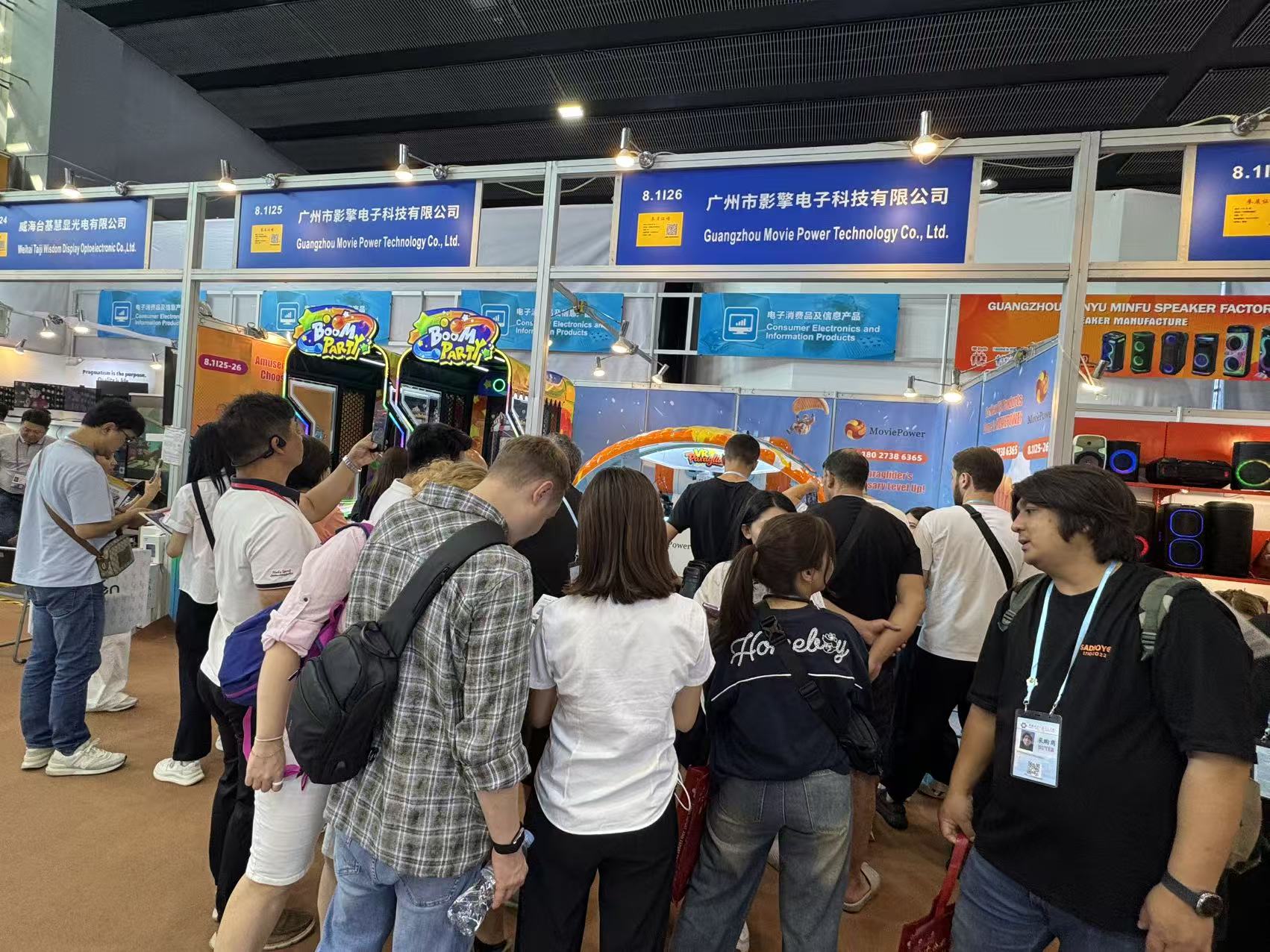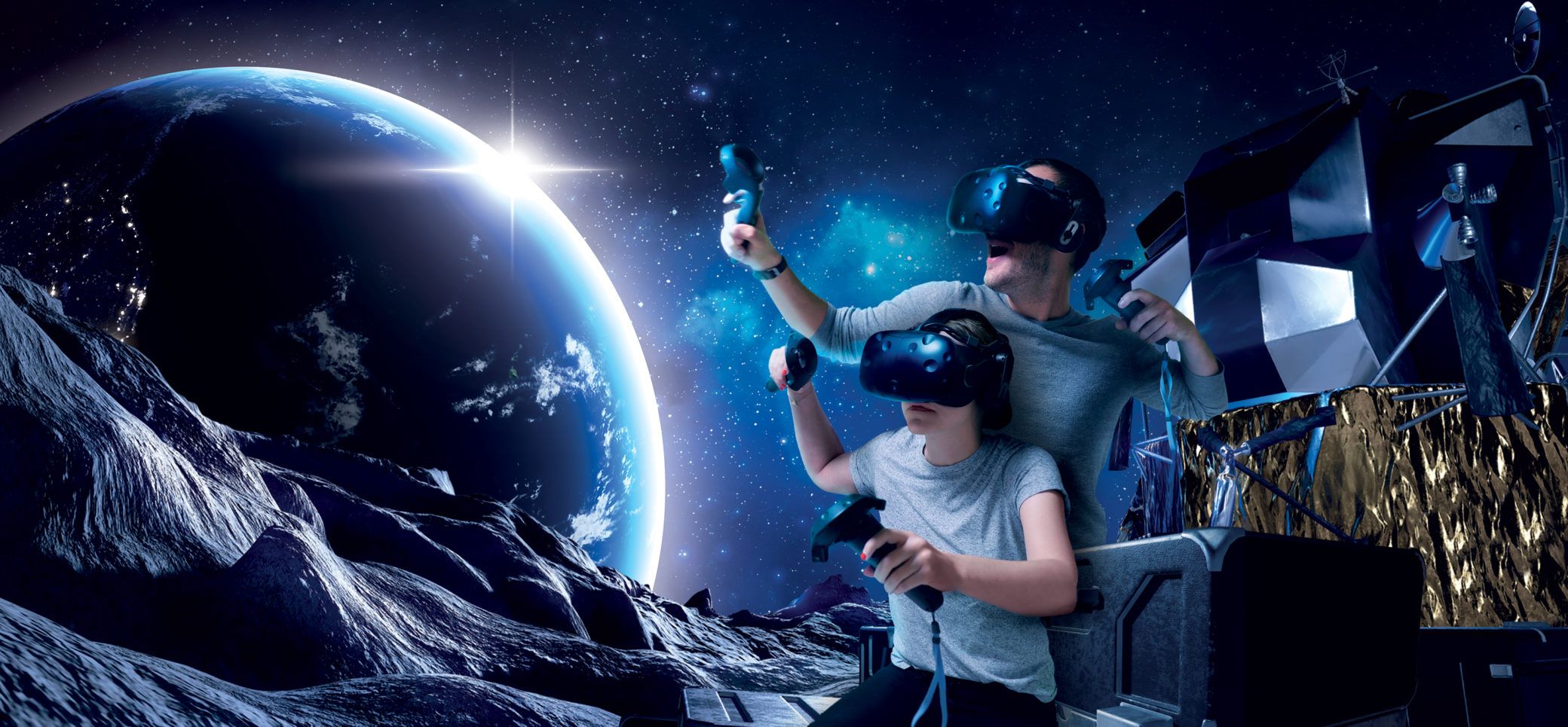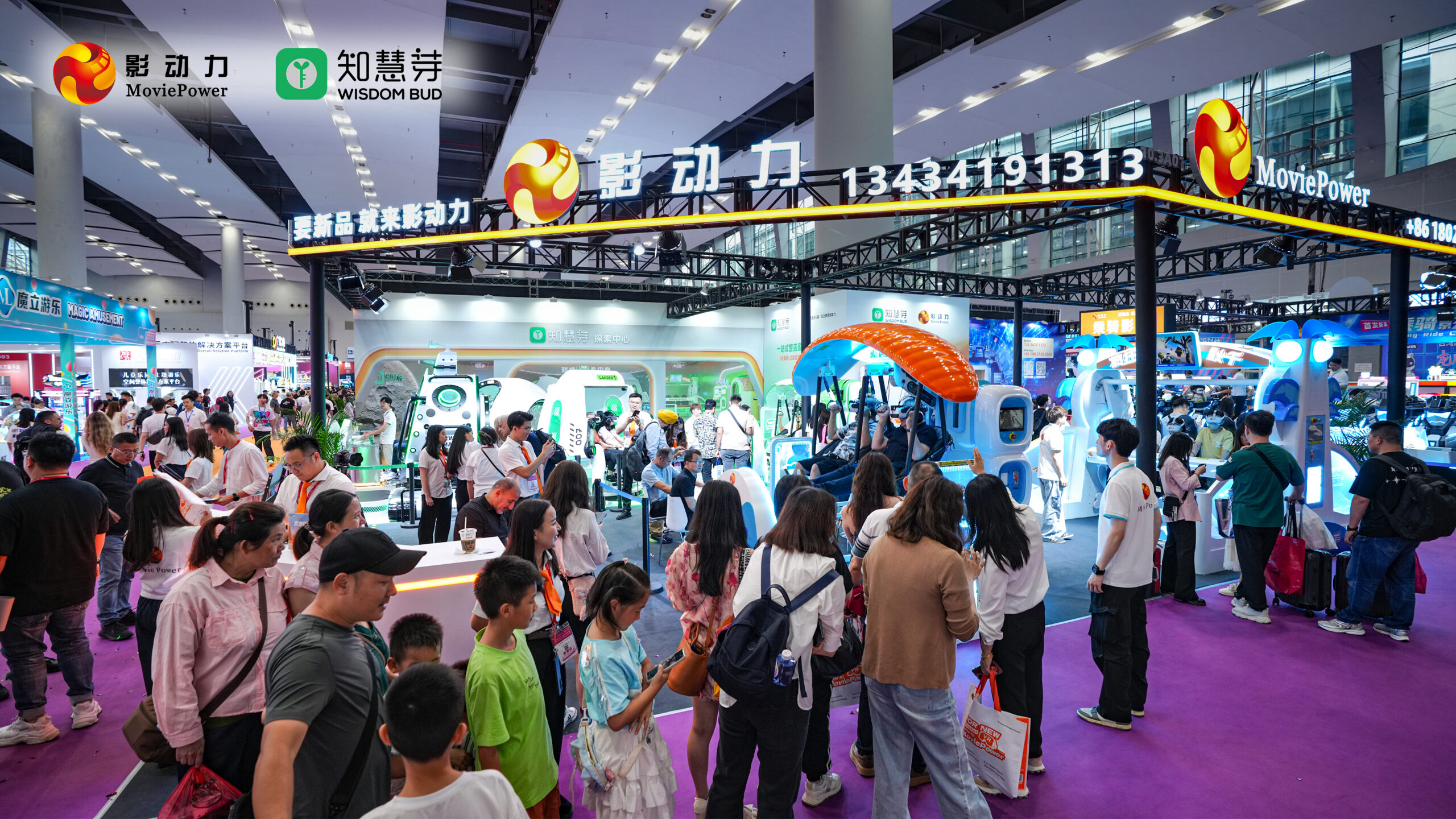في الشتات التكنولوجي في القرن الحادي والعشرين, الواقع الافتراضي (الواقع الافتراضي) تجاوز حدود الابتكار, إلقاء تعويذة ساحرة على الإلكترونيات الاستهلاكية. إن شعبيتها المتزايدة بين السكان الشباب تستدعي السؤال المثالي – هل VR آمن للأطفال والمراهقين?
ما هي تقنية VR

VR هي تقنية تغيير اللعبة تؤثر على القطاعات المختلفة, بما في ذلك مجال التعليم من خلال حلول VR المختلفة. إنه يخلق تجربة تأخذ المستخدمين إلى عالم محاكاة, تحويل كيفية تفاعل الناس مع المحتوى الرقمي. في الوقت الحاضر, الخدمات التعليمية VR يتم استخدامها بشكل متزايد لإنشاء بيئات تعليمية مبتكرة وغامرة و أطفال داخلي للأطفال.
تعريف VR
من الأفضل فهم VR على أنه ثلاثي الأبعاد, بيئة تم إنشاؤها بواسطة الكمبيوتر والتي يمكن استكشافها بشكل تفاعلي من قبل فرد باستخدام واجهة كمبيوتر خاصة. عادة ما يتضمن مستخدم يرتدي جهاز سماعة الرأس مزودًا بأجهزة استشعار, التي تتبع حركات المستخدم وضبط طريقة عرض المستخدم وفقًا لذلك. للتجربة المثلى, تقوم بعض الأنظمة بدمج الأجهزة المحمولة التي تسمح للمستخدمين بالتفاعل مع البيئة الافتراضية.
أنواع تطبيقات VR
لدى VR العديد من التطبيقات التي تتراوح من الترفيه إلى الأعمال التجارية والمزيد:
- تعليم: تقنية الواقع الافتراضي في التعليم هي مغير للألعاب, إنشاء فصول دراسية افتراضية وتنفيذ التعلم من خلال الواقع الافتراضي. بعض تعليمية, سيتم تطبيق المتاحف غير الربحية أجهزة محاكاة سباقات السيارات للأطفال للحصول على فهم أفضل للأحداث والمواضيع. هذا يوفر للطلاب متعددة الحواس, غامرة, جذابة, وطريقة ممتعة للتعلم.
- الألعاب: VR يخلق بيئة غامرة ويجعل ألعاب الفيديو أكثر إثارة.
- الرعاية الصحية: يستخدم VR للتدريب الطبي وعلاج المرضى, إنشاء بيئات افتراضية آمنة للممارسة.
- التدريب والمحاكاة: يوفر VR التدريب العملي في الصناعات مثل الطيران والجيش, محاكاة المواقف الواقعية.
- العقارات: يعطي VR آفاق جولة افتراضية للممتلكات, توفير الوقت والموارد لهم.
- الصحة العقلية: يتم استخدام VR كأداة علاج لمختلف مشكلات الصحة العقلية, بما في ذلك الرهاب, اضطراب ما بعد الصدمة, واضطرابات القلق. عن طريق إنشاء التحكم, بيئات افتراضية آمنة, يمكن للمعالجين مساعدة المرضى على مواجهة مخاوفهم والتنقل.
- التدريب الرياضي واللياقة: يوفر VR أجهزة محاكاة التدريب الرياضي وبرامج اللياقة الافتراضية, تحويل الطريقة التي يعزز الرياضيون مهاراتهم.
- الفيلم والترفيه: تستخدم صناعة السينما VR لتجارب الأفلام الافتراضية, يوفر للمشاهدين طريقة غامرة للمشاركة في القصة.
- التجزئة والتجارة الإلكترونية: صالات العرض الافتراضية, غرف ملائمة, وتجارب التسوق تكتسب شعبية في قطاع التجزئة والتجارة الإلكترونية, السماح للعملاء بمحاولة استكشاف المنتجات قبل الشراء.
أهمية استخدام الواقع الافتراضي للأطفال والمراهقين
يوفر VR تجربة بصرية متعددة الأبعاد غامرة يمكنها تحويل الطرق التقليدية للتعلم واللعب. يعزز التعلم النشط من خلال السماح للمستخدمين بالتفاعل مباشرة مع المادة, وبالتالي تعزيز الفضول, والإبداع وتحسين الاحتفاظ بالذاكرة.
يمكن استخدام VR في التعليم لتبسيط الموضوعات المعقدة, وتوفير رحلات ميدانية افتراضية, هكذا تعريض الطلاب للثقافات والبيئات المتنوعة في جميع أنحاء العالم.
للمراهقين, يمكن أن توفر التدريب المهني في الحقول مثل الطب, هندسة, والطيران. يمكن أن تصبح المهام تجارب تعاونية وتفاعلية تعزز مشاركة الطلاب.
يمكن أن تحدث VR ثورة في التعليم والترفيه للأطفال والمراهقين, تعزيز تطورهم المعرفي, التفكير النقدي, والوعي العالمي. بالتوازن الصحيح, يمكن أن تكون أداة مؤثرة في تشكيل عقول الجيل القادم.
فوائد VR

يجلب VR عدة فوائد للأطفال والمراهقين, خاصة في الألعاب, ترفيه, والقطاعات التعليمية.
على سبيل المثال, محفز ألعاب القطط VR يقدم تجربة ألعاب غامرة, تشجيع مهارات التنمية والتنسيق المعرفي بين الأطفال.
علاوة على ذلك, التقدم في التكنولوجيا مثل كرسي بيضة VR مزيد من تعزيز تجربة الواقع الافتراضي, تقديم الإثارة والبهجة للمراهقين في ألعاب السباق, استكشاف المدينة, وحتى ركوب السفينة الدوارة.
للطلاب
إن استخدام VR للأغراض التعليمية قد أحدث ثورة في تجربة التعلم للطلاب بطرق عديدة:
- تعزيز المشاركة: يجد الطلاب أدوات تعليمية VR جذابة وغامرة, مما يؤدي إلى اهتمام أعلى ونتائج أفضل.
- تجربة العالم الحقيقي: يسمح VR للطلاب باستكشاف أماكن مختلفة, الثقافات, والأحداث كما لو كانت جسديا هناك.
- تنمية المهارات: يساعد VR في تطوير مهارات مختلفة مثل حل المشكلات, تعاون, والتفكير النقدي.
- التعلم المخصص: يوفر VR تجارب تعليمية مخصصة بناءً على قدرة كل طالب واهتماماتها.
لمؤسسات التعليم
تقدم تقنية VR فوائد كبيرة للمؤسسات التعليمية أيضًا:
- أدوات التدريس المحسنة: استخدام VR في التدريس عروض الأساليب الثورية لجعل المفاهيم المعقدة أكثر فهمية.
- تدريب واقعي: المؤسسات التعليمية المتخصصة في مجالات محددة مثل الرعاية الصحية, هندسة, ويمكن للهندسة المعمارية الاستفادة من الواقع الافتراضي من خلال تزويد الطلاب بعملية عملية, تجارب العالم الحقيقي.
- الفصل التفاعلي: يعزز الفصل الدراسي VR-Authority التفاعل, جعل التعلم أكثر تعاونًا وممتعًا.
- جاذبية العميل: يمكن للتكنولوجيا المتقدمة مثل VR جذب المزيد من الطلاب, وبالتالي تعزيز سمعة المؤسسة.
للمجتمع
في حين أن إدخال VR في المجتمع كان بطيئًا, يكتسب قبولًا بسبب الفوائد التالية:
- النمو الاقتصادي: يفتح الطلب المتزايد على VR صناعات جديدة مثل شركات محاكاة السباق, خلق فرص العمل, وتغذية النمو الاقتصادي.
- المساواة الاجتماعية: يمكن أن يوفر VR تعليمًا عالي الجودة في المناطق النائية, تعزيز المساواة الاجتماعية.
- التأثير البيئي: يمكن للسياحة التي تديرها VR أن تقلل بشكل كبير من التأثير البيئي السلبي للسفر الفعلي.
- تحسين الرعاية الصحية: التدريب على الرعاية الصحية باستخدام تقنية VR يمكن أن يحسن جودة الخدمة, في نهاية المطاف الاستفادة من المجتمع.
مخاطر واهتمامات استخدام الواقع الافتراضي في الأطفال والمراهقين
لكن, لأن التكنولوجيا لا تزال جديدة نسبيا, أثارت المخاطر المحتملة المرتبطة باستخدامها أسئلة بين الآباء والمعلمين. تركز المخاوف بشكل أساسي على آثار VR على الصحة البدنية, الرفاه النفسي, والسلوكيات الاجتماعية.
مخاوف الصحة البدنية
تشمل المخاوف الصحية الجسدية الناجمة عن استخدام VR لفترة طويلة بين الأطفال والمراهقين مجموعة من القضايا. مثل:
يخاطر الأطفال بالتنمية بصر ضعيف بسبب التعرض للصور الرقمية عن قرب.
يمكن أن تؤدي الحركة المتكررة في المساحات الواقعية المحصورة إلى إصابات, بينما الارتباك أو الخلل قد يؤدي بسبب استخدام الواقع الافتراضي إلى السقوط.
يؤدي عدم النشاط البدني على المدى الطويل إلى نمط حياة مستقر يمكن أن يؤدي إلى السمنة وتراجع اللياقة العامة.
التأثير النفسي
يمكن أن يكون التأثير النفسي لاستخدام الواقع الافتراضي على الأطفال والمراهقين مهمًا جدًا.
يمكن أن يؤدي استخدام VR الممتد إلى الإدمان, تعطيل الأنشطة اليومية العادية وروتين الدراسة.
بالإضافة إلى, يمكن للطبيعة الغامرة ل VR تشويه شعور المستخدم بالواقع والشعور الطبيعي بالوقت, ربما التسبب في الارتباك والقلق.
هناك أيضا مخاوف من ذلك محتوى عنيف أو غير مناسب قد يؤثر على المستخدمين المنطبقين, تشكيل وجهات نظرهم ومواقفهم بطرق ضارة محتملة.
التداعيات الاجتماعية
إلى جانب المخاوف البدنية والنفسية, يمكن أن يؤثر استخدام الواقع الافتراضي على السلوك الاجتماعي للمستخدمين الشباب.
نظرًا لأن تجارب الواقع الافتراضي هي في الغالب, يمكن أن يؤدي الاستخدام الممتد إلى العزل الاجتماعي.
بالإضافة إلى ذلك, يمكن أن تؤثر VR على مهارات الاتصال بين الأشخاص, نظرًا لأن المستخدمين قد يفضلون بشكل متزايد التفاعلات الافتراضية على اللقاءات الاجتماعية وجهاً لوجه.
علاوة على ذلك, قد يكون هناك خطر التعرض للتفاعلات الاجتماعية غير المناسبة أو البلطجة في المجتمعات الافتراضية, استلزم الإشراف والتدخل المناسب.
كيفية جعل VR آمنة للأطفال والمراهقين

يجب استخدام تقنية VR بأمان ومسؤولية, خاصة عندما يتعلق الأمر بالأطفال والمراهقين. بينما يستكشف المعلمون والمتعلمون مزايا التعلم الغامرة مع VR و AR, the safety concerns regarding these technologies should be highly emphasized. Understanding potential risks and implementing safety measures can ensure a healthy and enjoyable VR experience for young users.
Parental Supervision And Control
- Set Usage Limits: Continuous use of VR can lead to motion sickness or nausea. Aim for breaks every 30 دقائق.
- Use Built-in Parental Controls: Many VR systems have parental controls that can restrict content and limit playtime.
- Be Aware of The Content: Always check the ratings and reviews of VR games or apps before allowing your child to use them.
- Encourage Breaks: Encourage kids to take breaks from VR to rest their eyes and move around.
Health And Safety Tips
- Ensure Sufficient Space: Clear ample space to prevent accidents while using VR.
- Adjust The Device: Properly fit the VR device to the user’s head for optimal comfort and safety.
- Stay Hydrated: Encourage drinking water during breaks to prevent dehydration.
- Watch for Signs of Discomfort: Stop VR use if the user feels dizzy, nauseous, or uncomfortable.
- Check Your Surroundings: Make sure the area is clear of individuals, furniture, and other obstructions to avoid accidents.
- Monitor Health Conditions: If you have certain medical conditions such as a history of seizures, consult your doctor before using VR.
- Popularize Scientific Knowledge: Users must be aware of the psychological effects such as disorientation or dizziness after using VR, especially in immersive learning scenarios.
Recommended VR Content for Different Age Groups
- أطفال (Under 10): Choose VR experiences that are educational and colorful, and avoid violent or scary content.
- Teens (10-13): Go for VR games that promote problem-solving, إِبداع, or physical activity.
- Teens (14+): This group can handle more complex games, but make sure the content is still appropriate for their age.
These guidelines don’t necessarily cover all potential risks but can certainly go a long way in ensuring a safer VR experience.
خاتمة
VR offers inspiring potential to revolutionize the digital era for future generations. Nevertheless, its use among children and adolescents should be navigated prudently, balancing valuable gains with possible hazards. By implementing appropriate management, VR can transform into an instrument of enhancement instead of a cause for harm. A balanced approach, هكذا, can ensure this technology offers growth and stimulation, rather than detrimental effects to younger audiences.



